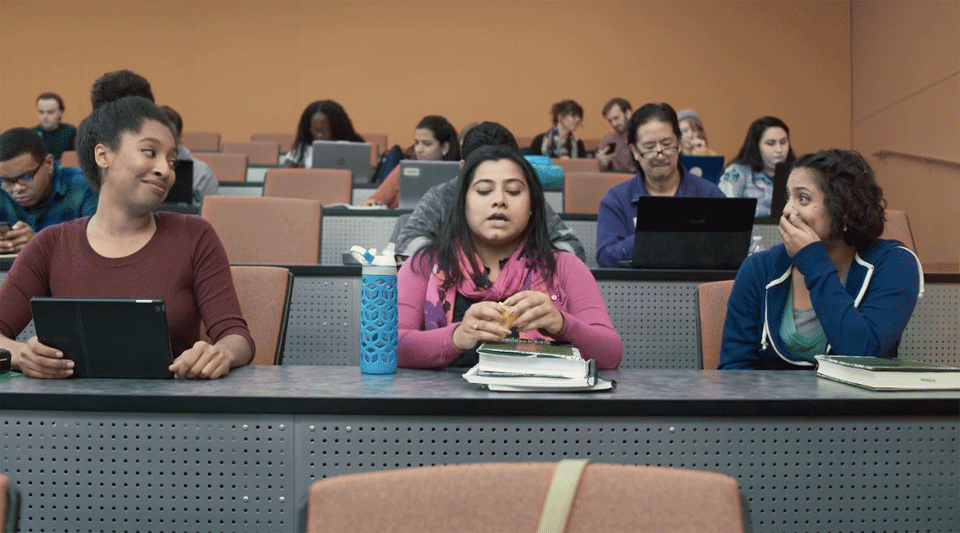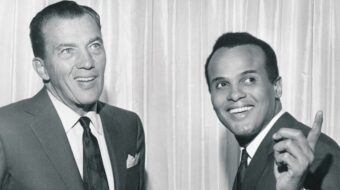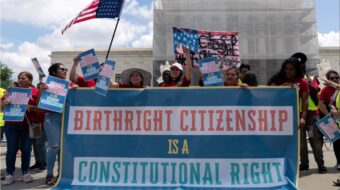
CHICAGO— This week, April 10, The Museum of Contemporary Art hosted a special screening for the first episode of FOBia. The premiere was streamed through OTV, an intersectional production platform that has been at the forefront of independent media in Chicago, and is now releasing the much anticipated immigrant-centric comedy.
FOBia follows the story of Kay—an Indian “FOB” (meaning “Fresh Off the Boat,” a slang term for someone who is newly arrived in the States)—as she adapts to American life. The mastermind behind the show is artistic creator Priya Mohanty, an Indian immigrant actress based out of Chicago. The series is also directed by independent media veteran Reshmi Rustebakke (Brujos). Mohanty arrived from Mumbai in 2008 to pursue her MBA at Duke University. Now, over a decade later, she is a renowned actress and web series creator.
FOBia takes the standard sitcom formula and places different faces into the mix. The series is centered around three main characters: Kay (loosely based on Mohanty), Bina, Kay’s FOB neighbor, and Ashanti, Kay’s Black American roommate. The narrative follows the lives of the three graduate students as they deal with money issues, romance struggles, and cultural misunderstandings.
One of the many aspects of the pilot that sets it apart is the witty dialogue and cheeky humor. The tone is campy and light, but the story itself is one that is not often accurately depicted in the media. “We always hear about immigrants but never from them,” Mohanty explained while talking to People’s World about her creative writing process. “The immigrant stories we hear are never from our perspective, and we always end up being the butt of the joke.”
Mohanty’s work speaks to the ongoing issues around lack of roles for Asian actors in theater and film, and particularly, limited representation of South Asian characters. The portrayal in familiar existing performances is often riddled with harmful tropes and racist stereotypes. “Can we please stop with the Apu accents?” said Mohanty, emphasizing the xenophobic trend of homogenizing Indian characters into caricatures.
Despite remaining largely unrepresented, in recent years there has been a more wide-spread effort to cast Asian actors in mainstream movie roles. The pushback from the public against the “whitewashing” of roles—which is the pattern of casting white actors in roles that are intended for Asian characters—has resulted in some progress. This feeds back into the issue that a lot of actors of color face: They are not being blind cast in roles that are not explicitly written for Black or brown characters.
Mohanty was similarly frustrated by the lack of opportunities she faced when she first began acting. “We see some South Asian stories,” she expressed, “but what is frustrating is that women are always portrayed as some undesirable obstacle that a man has to overcome to get to his white princess.” Part of her goal in creating FOBia was to challenge the misconceptions of Indian culture and display the wide range of diversity in immigrant populations. “There is a tendency to homogenize immigrants, but just because you’re an immigrant doesn’t mean we all have the same struggles,” Mohanty explained.
Bina, the quirky neighbor girl in FOBia, serves as a shining example of that juxtaposition. During a scene in the pilot in which Kay is complaining about having nothing in common with her roommate Ashanti, Bina reminds her that they also don’t have a lot in common. “We’re both Indian but you’re rich and I’m not—you went to all high society great schools, you take international vacations,” Bina reminds her. The two end up bonding over their unified love of Shariq Khan but come to the consensus that they are, in fact, vastly different people, despite having similar racial backgrounds.
FOBia may take a whimsical tone, but the content is authentic and deals with realistic themes. “As an artist, it is our job to reflect the truth of the world we live in, and our current world is extremely political,” Mohanty said.
The up-and-coming actress said that a lot of people are “oblivious” about the realities of immigrant life in the United States. “We have some of the strictest immigration laws in the world,” the actress explained; “the wait time for a green card is anywhere from 16 to 200 years, I’m not exaggerating.”
“I wanted to tell my story,” Mohanty said. “People always tell me that the show feels American to them, but I think that goes to prove we have so much more in common than we think.”
The independent web series is currently in production, but the crew has yet to finish filming the season. Mohanty has encountered difficulties funding the completion of the project because she is ineligible for many grants due to her non-citizen status. “Ironically, even as I am creating the story of immigrant struggles, I am living them myself,” she observed.
Mohanty continues to remain focused on finding investors and spreading the word about the series. Until then, she remains hopeful that her art will resonate with audiences and attract enough interest to fully execute her artistic vision for the show.
The pilot episode can be seen here.










